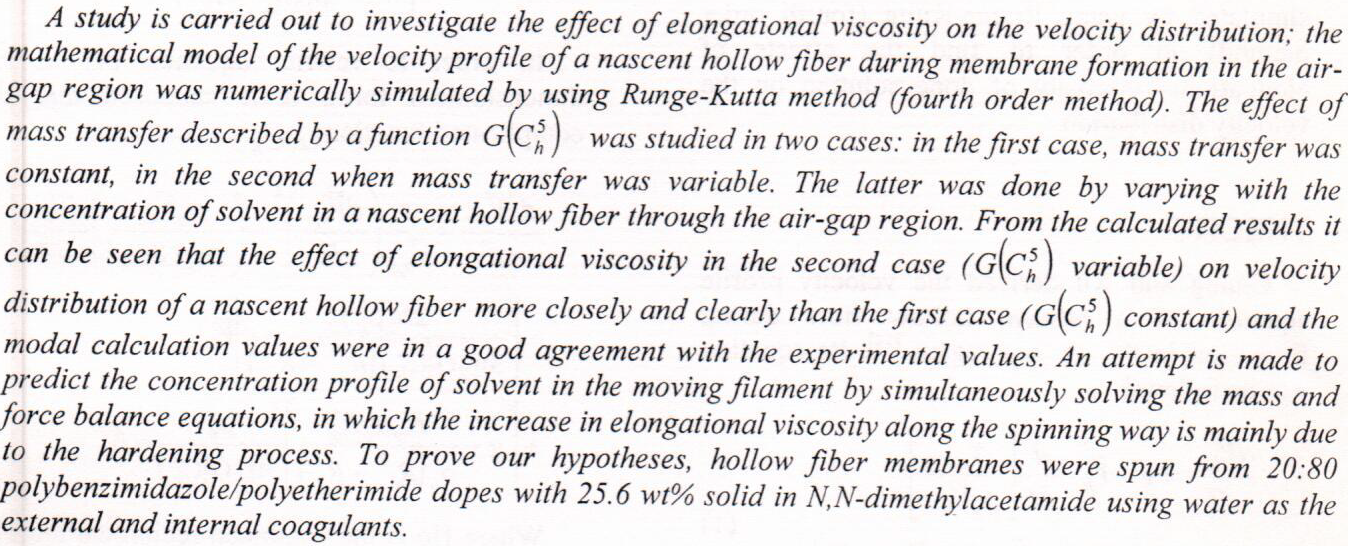
Conducted two trials separate plants Defla first two seasons, 1998 and 1999 to test the susceptibility Altgveria three varieties including Azharha colored white and pink Qati and pink Qtmr and second seasons 1999 and 2000, two types color Azhaarhama white and pink Qati treated mind half-timbered two types of Alaoxinat IBA and NAA and three concentrations as well as repeatersAdhrt results low Almaah rooting
Interest has largely centered on the use of plant fibers to reinforce plastics, because these fibers are abundant and cheap. Carrot fibers (Curran) have been extracted from carrot, left over from carrot juice manufacture. The fibers of two sizes fine (50<µm) and coarse (100-150 µm) have been mixed with epoxy in four levels of loading (10, 20, 30, 40 wt %) respectively. Impact test, shore d hardness test and three point bending test of epoxy and carrot fiber-epoxy composites samples have been determined. The impact strength values of samples prepared with fine and coarse fibers increased as compared with pure epoxy sample. Hardness values increased, and the Young’s modulus values decreased with fiber content of both sizes.
 (2)
(2)
 (17)
(17)
 (4)
(4)
 (4)
(4)
An optical spectroscopic study is reported in this article to study the correlation between the supermassive black hole (SMBH) and the star formation rate (SFR) for a sample of Seyfert galaxies type (I and II). The study focused on 45 galaxy of Seyfert 1, in addition to 45 galaxy of Seyfert 2, where these samples have been selected form different survey of Salon Digital Sky Survey (SDSS). The redshift (z) of these objects were between (0.02 – 0.26). The results of Seyfert 1 galaxies shows that there good correlation between the SMBH and the SFR depending on statistical analysis parameter named Spearman’s Rank Correlation in a factor of (ρ=0.609), as well as the Seyfert 2 galaxies results show a good correlation between the SMBH and
... Show MoreAn optical spectroscopic study is reported in this article to study the correlation between the supermassive black hole (SMBH) and the star formation rate (SFR) for a sample of Seyfert galaxies type (I and II). The study focused on 45 galaxy of Seyfert 1, in addition to 45 galaxy of Seyfert 2, where these samples have been selected form different survey of Salon Digital Sky Survey (SDSS). The redshift (z) of these objects were between (0.02 – 0.26). The results of Seyfert 1 galaxies shows that there good correlation between the SMBH and the SFR depending on statistical analysis parameter named Spearman’s Rank Correlation in a factor of (ρ=0.609), as well as the Seyfert 2 galaxies results show a good correlation between the SMBH
... Show MoreIntegrated project delivery is collaboratively applying the skills and knowledge of all participants to optimize the project's results, increase owner value, decrease waste, and maximize efficiency during the design, fabrication, and construction processes. This study aims to determine IPD criteria positively impacting value engineering. To do this, the study has considered 9 main criteria according to PMP classification that already covers all project phases and 183 sub-criteria obtained from theoretical study and expert interviews (fieldwork). In this study, the SPSS (V26) program was used to analyze the main criteria and sub-criteria priorities from top to bottom according to their values of the Relative Importance In
... Show More (1)
(1)
The microbend sensor is designed to experience a light loss when force is applied to the sensor. The periodic microbends cause propagating light to couple into higher order modes, the existing higher order modes become unguided modes. Three models of deform cells are fabricated at (3, 5, 8) mm pitchand tested by using MMF and laser source at 850 nm. The maximum output power of (8, 5, 3)mm model is (3, 2.7, 2.55)nW respectively at applied force 5N and the minimum value is (1.9, 1.65, 1.5)nW respectively at 60N.The strain is calculated at different microbend cells ,and the best sensitivity of this sensor for cell 8mm is equal to 0.6nW/N.
 (3)
(3)
 (1)
(1)
This paper focuses on Load distribution factors for horizontally curved composite concrete-steel girder bridges. The finite-element analysis software“SAP2000” is used to examine the key parameters that can influence the distribution factors for horizontally curved composite steel
girders. A parametric study is conducted to study the load distribution characteristics of such bridge system due to dead loading and AASHTO truck loading using finite elements method. The key parameters considered in this study are: span-to-radius of curvature ratio, span length, number of girders, girders spacing, number of lanes, and truck loading conditions. The results have shown that the curvature is the most critical factor which plays an important
This paper deals with defining Burr-XII, and how to obtain its p.d.f., and CDF, since this distribution is one of failure distribution which is compound distribution from two failure models which are Gamma model and weibull model. Some equipment may have many important parts and the probability distributions representing which may be of different types, so found that Burr by its different compound formulas is the best model to be studied, and estimated its parameter to compute the mean time to failure rate. Here Burr-XII rather than other models is consider because it is used to model a wide variety of phenomena including crop prices, household income, option market price distributions, risk and travel time. It has two shape-parame
... Show More (2)
(2)
